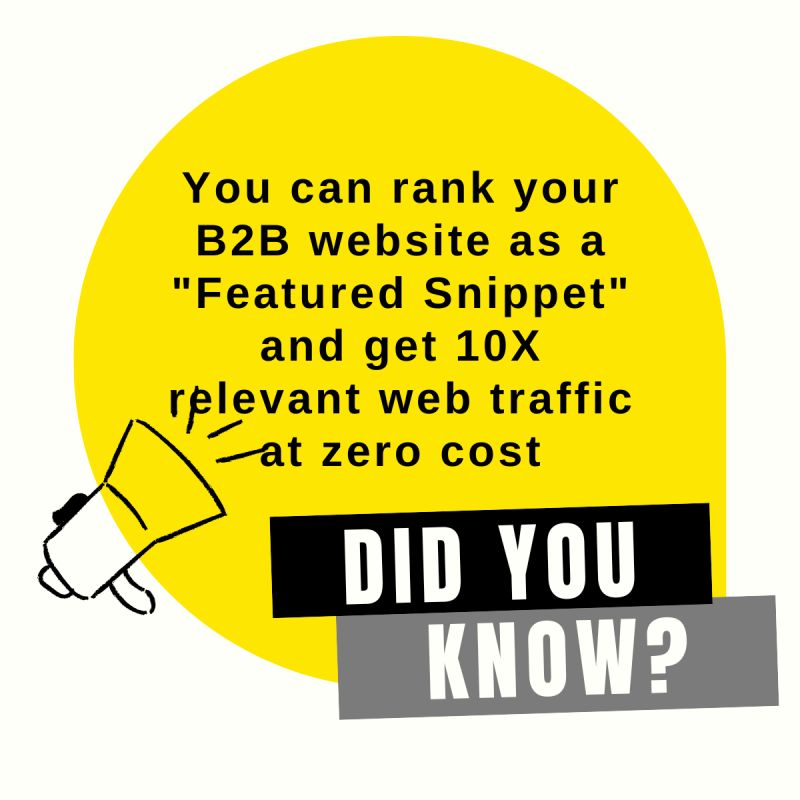Ranking on relevant keywords in Google SERPs is the holy grail for most B2B businesses.
But most of them struggle to achieve the same.
What they lack is a coherent strategy.
I am sharing my methodology to rank one of my client’s blogs on a relevant featured snippet and it has stayed there for more than a year…driving relevant traffic. I can’t reveal the name of the client due to strict NDAs but it’s an enterprise B2B SaaS client in the BPM and workflow automation industry.
Here are the 10 steps I used,
1) I first did a thorough analysis of their ICP (Ideal Customer Persona) and spoke to their sales team about the industries they are targeting.
2) Post that I did my research on the short tail (1-3 words) and long tail keywords (4+ words) around those industries and their challenges
3) I realized that the short tail keywords, though relevant and featuring higher search volumes, were very competitive and weren’t necessarily featuring high intent
4) Hence I doubled down on 8-10 long tail keywords which showed lesser search volume but better buying intent and less competition. I made a list of 5-6 relevant variations of each of these 8-10 keywords.
5) I reviewed the landing pages of competitors who were ranking on featured snippets on these keywords and learned from their on-page and off-page strategy.
6) I had our content team work on 2000-2500 word blogs targeting each of these 8-10 keywords
7) The blogs featured a proper industry overview, Q&A-based content, listicles, pictures, videos, and relevant keywords (not stuffed but strategically placed in the content without reducing legibility)
8) I got competitive backlinks for each of the blogs from websites that had high domain rating and also linked them to other relevant blogs/landing pages within the website to ensure appropriate internal linking
9) I plugged in the right keywords in the meta description of the blog to ensure appropriate categorization by google algorithms
10) I also made sure that our blog URL mirrored the search term we wanted to rank for – one of the most important but often neglected aspects of optimization.
The result was unexpected. We started ranking for 4 keywords out of the 10 targeted keywords in the first 3 months. While we did lose out on ranking on and off but we ensured that we updated the pages with optimized content. As of date, we have a couple of pages ranking as featured snippets for relevant keywords, even after 1 year of making them live
If you are a marketer and have experience in ranking blogs for featured snippets, I would love to know your strategy and experience in doing the same.
If you are a B2B business and require support for your featured snippet strategy, do not hesitate to reach out 🙂
10 steps to rank your B2B website as a “Featured Snippet” and get 10X relevant web traffic at zero cost
